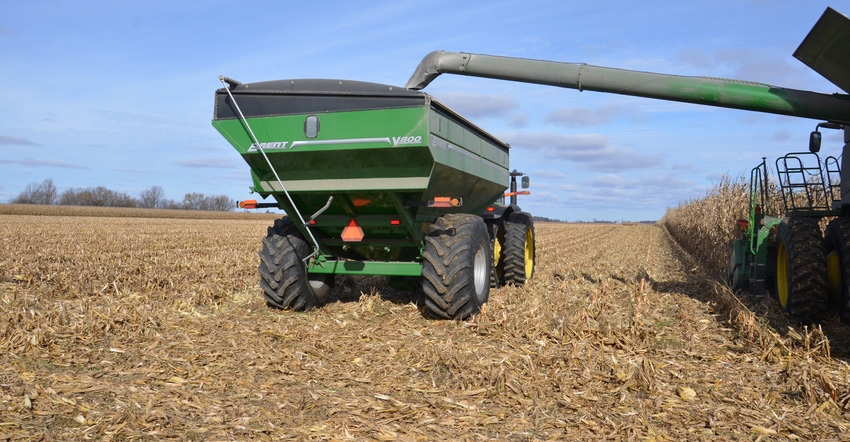September 10, 2018

We’re not sold on cover crops yet. However, my son wants to no-till more acres next spring, even in corn following corn. Won’t specific insects be more of a risk if we don’t till them under now where corn will follow corn?
The Indiana certified crop advisers answering this question are: Betsy Bower, Ceres Solutions Cooperative, based in Lafayette; Steve Gauck, Beck’s sales agronomist, Greensburg; and Dan Ritter, agronomist with Dairyland Seed, Wabash.
Bower: Insect larvae such as white grubs, wireworms and seed corn maggots can really hurt slow-growing seedling corn. We currently use seed treatments on most corn to reduce the potential for these insects to affect young corn. But open seed slots from planting wet can allow stinkbug and slugs to be problematic, as well as mice, voles, groundhogs, geese and more.
No-tilling corn on corn provides two potential challenges early in the season. No-till soils are typically cooler and can often be wetter than tilled soils. Germination can be delayed. While research supports planting corn early, planting corn in more ideal conditions will typically trump planting early in most years. Leave your corn-on-corn field to near the end of planting unless dry, warm soils occur.
The other challenge will be the nature of corn on corn. It’s a challenge in conventional till, too. A young corn seedling is trying to grow at the same time soil biology is trying to break down roots of the previous crop. This degradation takes microbes and any free nitrogen. The microbes will steal nitrogen, including preplant and starter nitrogen. Consider adding about 60 to 80 pounds per acre of preplant N in multiple forms, or combinations of starter, weed-and-feed or dry fertilizer such as urea or AMS applied at planting or soon after.
I highly recommend a 2-by-2 starter, as you can concentrate more total nutrients such as nitrogen, phosphorus and sulfur in a concentrated band near the seed for the young seedling to access. You may even layer some 28% with your preemergence herbicides. A pop-up starter is also suggested, but pop-up doesn’t allow you to apply significant amounts of early-season nutrition. My choice would be both, but if necessary, I would choose 2-by-2 starter over pop-up to deliver overall more early-season nutrition.
Shallowing up the planter to improve emergence due to warm soils doesn’t allow normal root development and can put the seed in the soil’s residual herbicide zone.
Gauck: Insects can be a concern when moving into a cover crop and no-till system. Take precautions to help keep their impact minimal. If you’re not using cover crops, consider a fall herbicide program or an early-spring burndown to eliminate weeds that could host insects. Consider using seed treatments that contain an insecticide. You can use corn with a rootworm trait if they’re a concern. Insects such as wireworm and seed corn maggot are easily controlled with seed-applied insecticides.
Ritter: Tillage could disrupt pests like European corn borer which overwinter in cornstalks. We could also help bury other insects and hinder their emergence next growing season. However, if this is a farm that will benefit from no-till and cover crops, it may be best to use cover crops and limit tillage. I’m convinced it’s harder to build up and improve the soil than control most corn insects. We have several control options for pests like corn borer, but it takes a while to build up good soil health.
You May Also Like




